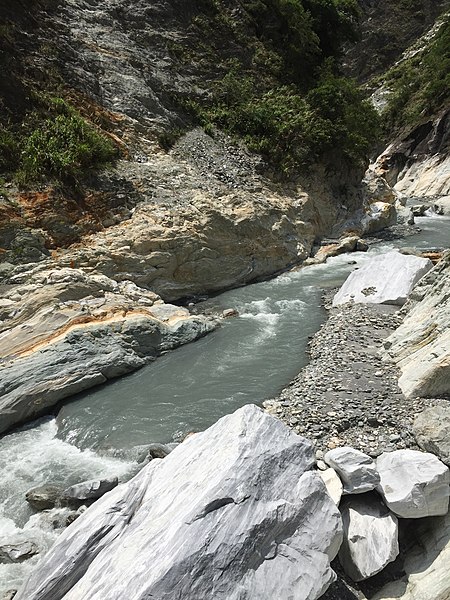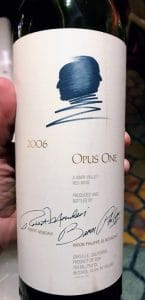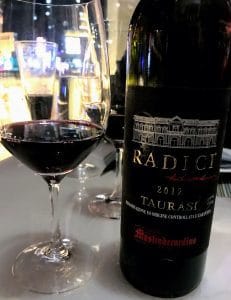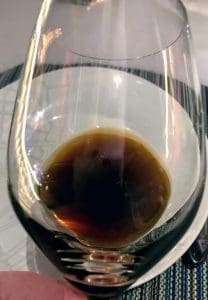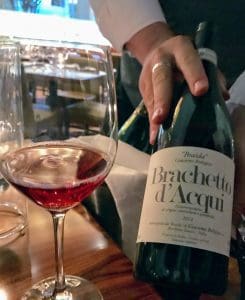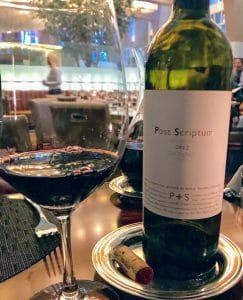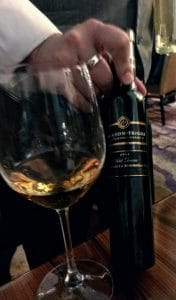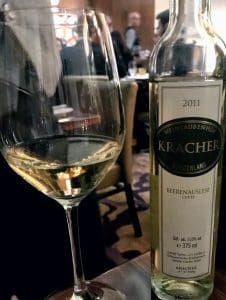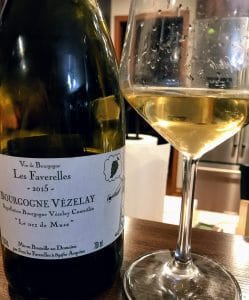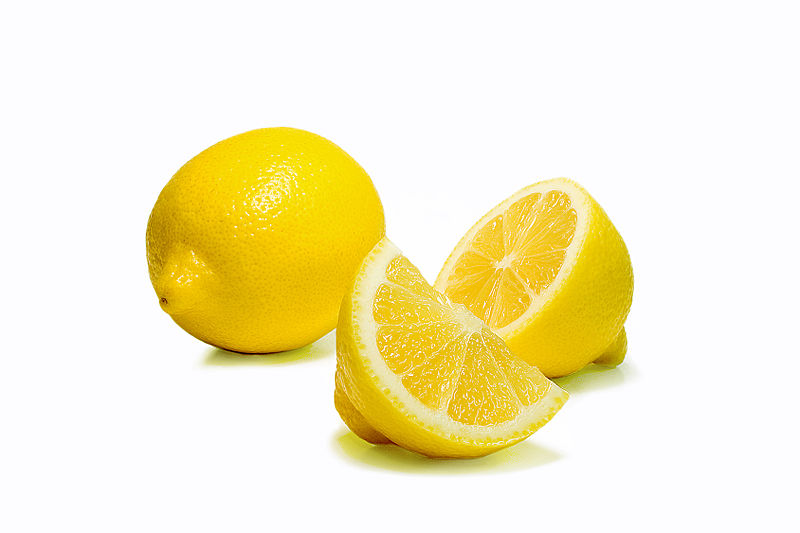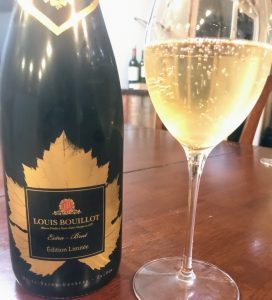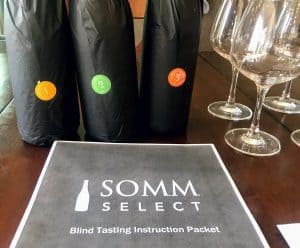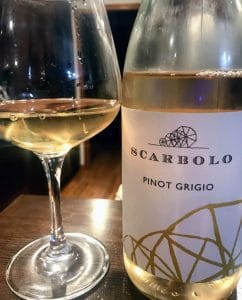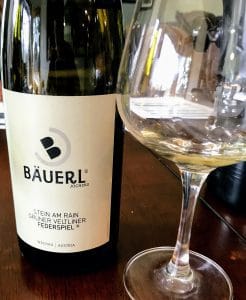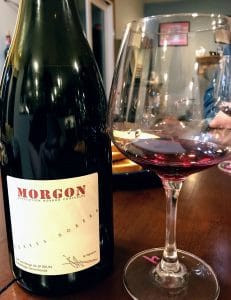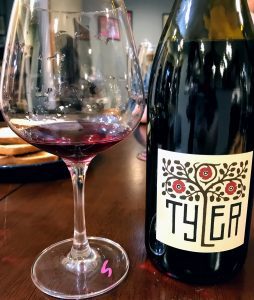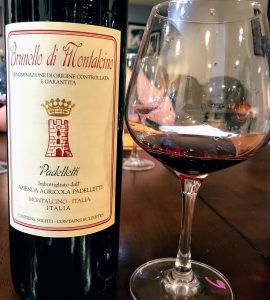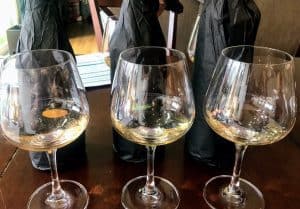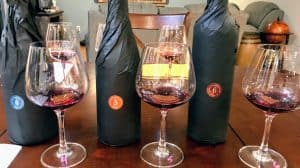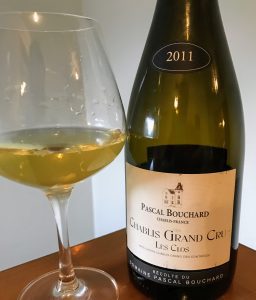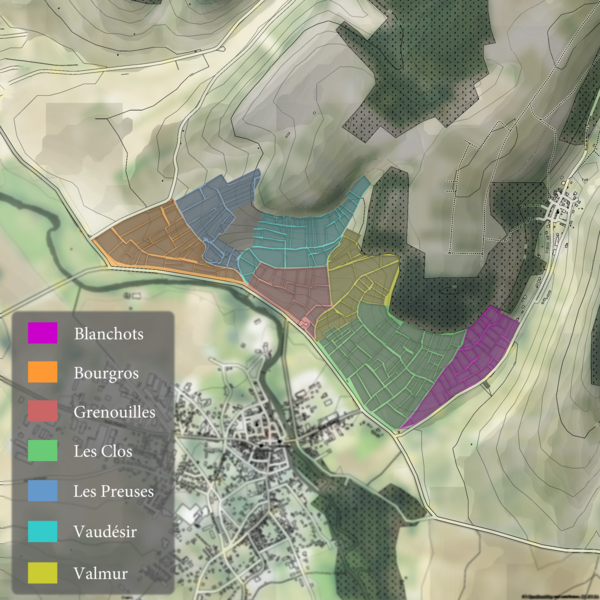A couple of days ago, Harper’s UK posted an article about the dominance of Old World wine in the Chinese on-trade sector (restaurants, bars, etc.). While New World regions like Australia are making an active play, France still rules the roost with a 36.7% market share.
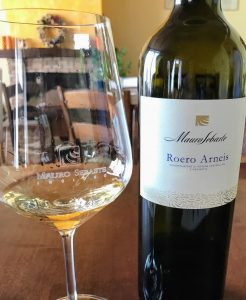
But the French have been focusing on China for a few decades now–starting not long after France and China formally established diplomatic relations in 1974. Interest was strongly led by Bordeaux estates, which still make up a sizable chunk of the French-Chinese market today.
However, the most eye-raising stat from Harper’s report was the very solid share of Italian wines at 17.9%. Though, as the article noted, Italian wines still only account for 6.3% of total Chinese imports–which includes grocery and retail sales.
But considering that you don’t hear much about marketing Italian wines in China, there is plenty of room for optimism if I’m an Italian wine producer.
And it’s not just China that is seeing growth in Italian wine sales.
Italian wine sales in the US have been steadily growing as well–and, no, it’s not your grandma’s straw basket Chianti or cheap Pinot grigio that’s fueling that growth.
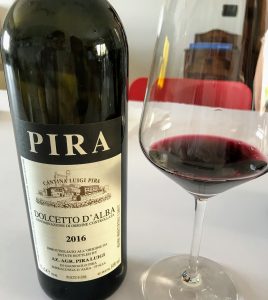
Luigi Pira’s Dolcetto d’Alba is a screaming good deal in the $12-16 range retail and is rarely seen above $35-40 at restaurants.
Instead, backed by a huge marketing push, Americans are discovering the vast diversity of Italian wines. With its bounty of unique and exciting grape varieties, as well as thousands of small producers, Italian wines are particularly enticing to Millennials who desperately seek something different from the same ole, same ole.
Even better, because Italian wines are still lingering in the straw basket shadow of fiascos past, many of these wines are crazily underpriced. Especially in the $10-20 range, you can often find bottles that way overdeliver on the price. Simply put, Italian wines are nailing the Millennial Math.
In the race to capture the hearts of the elusive Millennial market, Italian wine producers have a great head start. Wineries across the globe are well advised to pay attention to a sleeping giant that is poised to take more of their market share.
But you don’t have to take my word for it. Go check out your local wine shop and meander over to the Italian section. Look for examples of these grapes below and see for yourself what the hype is all about.
Seven exciting Italian wine grapes to try.
Below are varieties that most good wine shops should carry at least one, if not multiple, examples of. All of the pictured and referenced wines are ones that I’ve personally found in the United States, though a few of them I did first try on producer visits to Italy. But, while they were all excellent, you don’t need to look for these particular producers. It’s more about just trying the grape.
BTW, if you want to geek out more about Italian grapes, I very highly recommend getting Ian d’Agata’s Native Wine Grapes of Italy as well as Joseph Bastianich and David Lynch’s Vino Italiano: The Regional Wines of Italy. That last recommendation currently has many used paperback options available on Amazon for less than $10 bucks. Great buy for wine students.
Aleatico
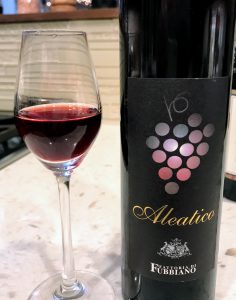
This Aleatico with dark chocolate covered raspberries was a heavenly pairing.
One of the oldest grapes in Italy, Aleatico can be found as far north as Elba and Tuscany and as far south as Sicily and Puglia. DNA evidence has shown that it has some parent-offspring relationship with Moscato bianco, but it is not yet known which grape is the parent and which is the child. Still, a good comparison of Aleatico is to think of a black Muscat with more racy acidity and spicy aromas of cinnamon.
Made in the passito style (with dried grape), this Fattoria di Fubbiano Aleatico reminded me of a richer and spicer ruby port. This wine was beautifully balanced with sweetness and deep dark fruit but still lively and fresh tasting. For around $25-30 for a 500ml bottle, it’s an excellent choice for that bedeviling pairing of red wine and chocolate.
A great choice for: Wine drinkers who want balance and complexity in their sweet dessert wines.
One of the biggest things that separate wine geeks from wine snobs is that geeks can appreciate good sweet wines. After dinner, many sweet wines are perfect as dessert themselves or as pairing partners. If you have a snob friend who always turns their nose up at sweet wine or who thinks Port is too alcoholic, challenge them with a great bottle of Aleatico.
Arneis
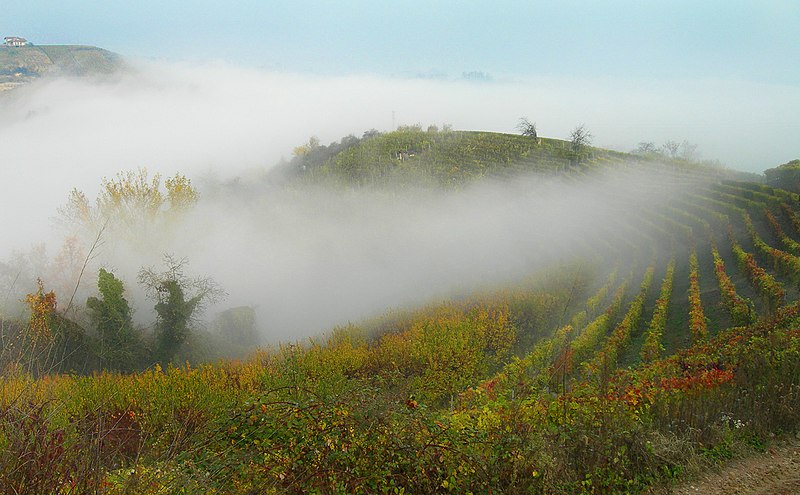
The same fog conditions that are so valuable for maintaining freshness in Nebbiolo can help Arneis retain its acidity in the right locations.
In the 1980s, Arneis was one of Italy’s most popular white wines, but this Piemontese grape eventually took a back seat to the global thirst for Italian Pinot grigio (and later Moscato). Still, quality minded producers like Mauro Sebaste never lost faith in this fresh and aromatically floral grape.
In the Piemontese dialect, the name “Arneis” is derived from the word for “rascally individuals,” and the grape can be a bit of a rascal in the vineyard. Producers have to pay attention to the vine throughout the growing season and make sure that it is planted in the right locations to thrive. The sandy, chalky soils of the Roero on the left bank of the Tanaro has shown itself to be particularly well-suited for Arneis.
Before DOC/G laws were tightened, the low acid Arneis was often blended into the higher acid Barbera and even Nebbiolo of Barolo to help soften those wines and add aromatic lift. It was a practice not that dissimilar to the co-fermenting of Viognier with Syrah in Cote Rotie. The best examples of varietal Arneis attest to the wisdom of that old practice with gorgeous white floral notes, subtle herbalness and creamy mouthfeel.
A great choice for: Fans of white Rhones like Viognier, Roussanne and Marsanne.
But also red Rhone drinkers for that matter too. The combination of lovely floral notes with a mouth-filling body makes this another great white wine option for red wine drinkers.
Barbera
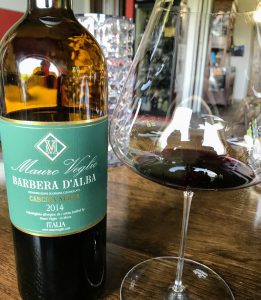
Pro tip: Producers who make really good Barolo and Barbaresco (like Mauro Veglio) will usually make a very kickass Barbera.
If you’re at a restaurant and don’t want to pay a fortune, compare the Barbera and Barolo/Barbaresco sections for producers.
I can guarantee that the Barbera will be a great buy.
One of the biggest surprises for me in visiting Piedmont was how much Barbera dominates the wine lists of local Piemontese restaurants. While Barolo and Barbaresco are the region’s pride and joy, Barbera is what they drink most regularly. And it makes sense because the grape produces immensely delicious wines that are very approachable young.
It’s also no shocker that Barbera is one of top 5 most planted grapes in Italy. What is a little more surprising is that it is one of the 15 most widely planted red grapes in the world.
Unoaked examples are going to show lively acidity and be redolent of red fruits. Meanwhile, some oak will introduce more vibrant chocolate notes. In general, the wines from Barbara d’Alba tend to be more full-bodied with more prominent tannins. While I find those from Barbara d’Asti to be more floral and velvety.
A great choice for: Folks getting knee deep and geeky into the Cru Beaujolais trend.
There are rocking bottles coming out of Beaujolais, but people are catching on and the prices are starting to rise. I actually find Barbera to be a little more consistent than Gamay. Plus, with it still being under the radar, amazing bottles can be easily found for less than $20.
Dolcetto
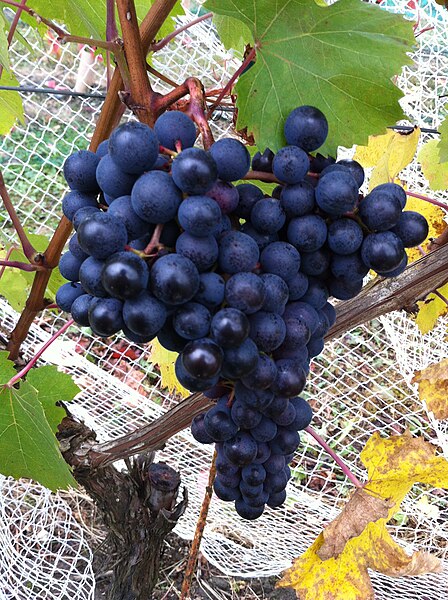
The “red stemmed” version of the Dolcetto has even made its way to the US. This cluster pic was taken at a vineyard in the Puget Sound AVA of Washington in mid-October just before harvest.
The “little sweet one” that is never sweet and rarely a little, light bodied wine. The name likely came from Dolcetto’s favoring as a table grape. I haven’t had the privilege of trying Dolcetto grapes off the vine. But I’ve heard from producers that they are quite a treat. Apparently, you can taste the bright red berry and plum flavors of Dolcetto as well as a subtle saline note that the best Piemontese examples exhibit.
While we don’t talk about clones as much for Dolcetto as we do for Sangiovese or Pinot noir, Dolcetto has quite a bit of clonal variation. In the vineyard, these can be readily apparent by looking at the cluster stalk. Most have a greenish stem, but one particular clone (or biotype as Ian d’Agata prefers) known as Dolcetto dal Peduncolo Rosso has a fiery red colored stem. It is a specialty of the Tassarolo area near Alessandria. However, it can be found in many vineyards in the Dolcetto d’Alba zone as well.
The Dolcetto d’Alba area tends to produce the biggest, most full-bodied Dolcettos with a mix of red and dark fruit. While not as tannic as the Nebbiolo of great Barolo and Barbaresco, these wines will have some heft. In the Dolcetto di Dogliani area, the wines tend to exhibit more floral notes. This is also the area where I pick up that saline minerality the most.
A great choice for: Wine drinkers wanting something between a Pinot noir and a Merlot.
While, undoubtedly, more tannic and bigger bodied, I get a lot of Pinot quality in some Dolcetto. Particularly with the floral and minerally nature of Dolcetto di Dogliani. However, those from the Dolcetto d’Alba area can have more opulent dark fruit. With oak influence, even some chocolate notes can come out. You wouldn’t ever confuse a Dolcetto for a plush, hedonistic Napa Merlot. However, the lively acidity and freshness can hit a lot of pleasure spots for Washington Merlot fans.
Falanghina
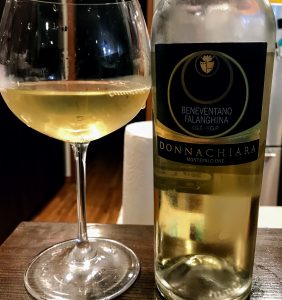
A great white wine option in the $14-16 range for pairing with medium to heavy body food dishes.
This is another ancient Italian wine grape with likely Roman origins. However, the association of Falanghina with the famous Roman wine Falernian is probably misplaced.
Part of this is because there are so many different types of Falanghinas out there. Ampelographers are not yet sure how many are different clones/biotypes or if they’re distinct grape varieties. For the most part, what you’ll see in the US is Falanghina from the Benevento IGP in Campania.
In the rich clay and volcanic tufa soils of Campania, Falanghina produces heady, full-bodied wines with tree fruits and floral notes. Some examples can also have a subtle leafy greenness. It’s not quite New Zealand Sauvignon blanc green but more reminiscent of an excellent white Bordeaux.
A great choice for: White Bordeaux fans!
But as with the Arneis above, I can also see Falanghina capturing the attention of white Rhone drinkers as well. It definitely has the body and structure to appeal to many wine lovers. Likewise, drinkers of unoaked or lightly oaked (but not buttery) Chards can find this wine to be a charming change of pace as well. It will pair with many of the same food dishes.
Friulano
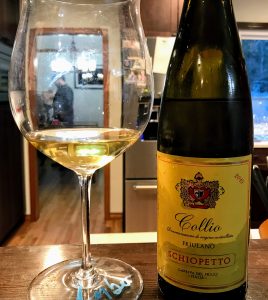
I had to hunt for online retailers that offered this Schioppettino Friulano but, even paying a premium, this was still an absolute steal of a wine for under $25.
When I had my big cellar-clean out parties before moving to France, this Schioppettino Friulano rocked my world. I was pretty much dragging this bottle to everyone at the tasting and telling them that they had to try this wine. If you ever wanted a textbook example of minerality, this was it.
Formerly known as Tocai Friulano, legend has it that Italians shared this grapevine with the 13th century Hungarian King Bela IV where it was once used for that country’s famous Tokay wines. Ampelographers and wine historians now believe that there is little truth to those tales. But the racy acidity, green apples, nutty almonds notes and flinty minerality of Friulano is not that far off from a dry Hungarian Furmint.
A great choice for: Fans of exciting, minerally whites.
Dry Riesling, Chablis, Sancerre. You’re probably not going to confuse Friulano with any of those. However, there is a kinship in the electric way that all these wines dance on your tongue. There’s a nerviness about them that is just absolutely intoxicating once you find a great example.
Another tell-tale distinction between wine geeks and wine snobs is the cyclic journey that geeks take in appreciation of great whites. Both snobs and geeks often start out drinking white wines. Maybe sweet Rieslings before moving on to the Chardonnay, Sauvignon blanc and Pinot grigios of the world. Then comes the dabbling in red wines. Here most snobs get stuck with the occasional allowance for the “appetizer” white wines of Great Burgundies and what not. All before you get down to the seriousness of red wines, of course.
But wine geeks eventually circle back to the wonderful world of whites. They can appreciate the seriousness and winemaking skill that making great white wines entails. Without a doubt, Friulano is a wine geek’s wine.
Dry Lambrusco

While it’s great with my wife’s homemade Margherita pizza, dry Lambrusco would elevate even Totino’s Party Pizza.
Yes, dry Lambrusco. We’re not talking about the Riunite or Cella Lambruscos that your Aunt has hidden under the cupboard. If you want the surest sign that you’re shopping in a good wine shop, it will most definitely be the presence of dry or Secco Lambrusco. Often with a slight effervescence, this is one of the most perfect pizza wines that you can find.
June’s #ItalianFWT Twitter chat–which I recently profiled– focused on Lambrusco with a lot of great write-ups and reviews of different wines (almost all of which can be found in the US). I highly recommend checking out the #ItalianFWT hashtag which featured links to many great blog posts. A few of my favs were:
The Wine Predator’s Bugno Martino’s Organic Lambrusco Defy Expectations.
The Asian Test Kitchen’s TOP 5 FAST FOODS PAIRINGS WITH LAMBRUSCO.
Linda Whipple’s SIPPING LAMBRUSCO IN STRAWBERRY SEASON
A great choice for: Pizza lovers.
While the blogs listed above gave other great pairing ideas, my heart still goes to pairing dry Lambrusco with pizza. The tang and sweetness of the tomato sauce pairs gorgeously with the bite and rambunctious berry fruitiness of Lambrusco. Plus the saltiness of the cheese and toppings is the perfect foil for the tannins and subtle earthiness.
This really is one of those magical pairings that everyone should try. You can see how vividly the wine and food change when you have them separate compared to having them together.
Want more? Check out these 60 Second Reviews of a few more Italian wine favorites
60 Second Wine Review — Lanzavecchia Essentia . A crazy delicious Nebbiolo, Barbera and Merlot blend that I’m still smarting over not buying more bottles of.
60 Second Wine Review — 2008 Ferrari Perlé. A $30-35 traditional method sparkler that blows most mass-produced negociant Champagnes in the $40-50 range out of the water.
60 Second Wine Review — Armani Colle Ara Pinot Grigio. Think all Italian Pinot grigios are cheap and watery? Think again.

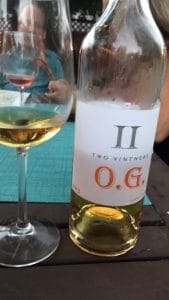
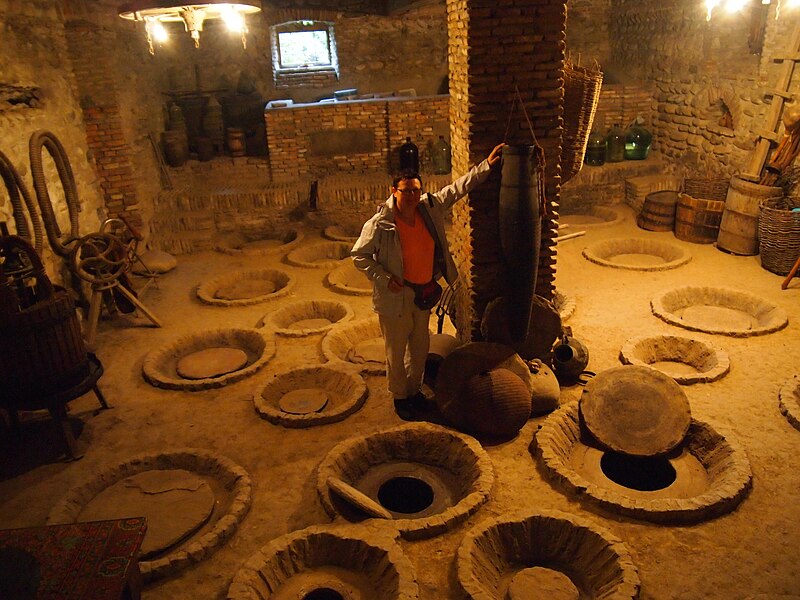
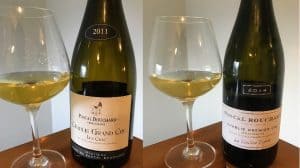
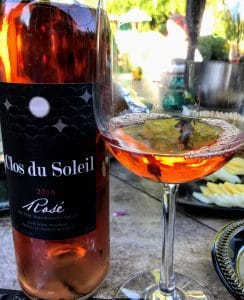
 The First of September kicks off
The First of September kicks off 


